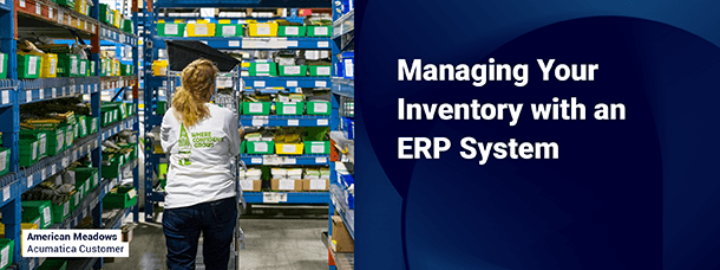SWK Technologies reveals five benefits of cloud-based inventory management. Distributors tired of managing inventory through outdated methods or disconnected technology may want to take note.

Understanding Cloud-based Inventory Management
Cloud-based inventory management refers to the use of internet-based systems to manage inventory levels, orders, sales, and deliveries.
Unlike traditional systems that require on-premises servers and software installations, cloud-based solutions offer real-time tracking and remote access. For example, a manager can check stock levels and process orders from anywhere using a mobile device, ensuring timely decision-making and enhanced operational efficiency.
Benefits of Cloud-Based Inventory Management
SWK Technologies outlines five advantages of cloud-based inventory management. Distributors who are weary of handling inventory with outdated techniques or disconnected systems should pay attention.
Inventory management is by far one of the top pain points for distributors—but it doesn’t have to be. Inaccuracies in your stock counts will cut into your ROI on product, yet real-time tracking and reporting in the cloud can prevent siloed data from hurting your business processes. Investing in cloud-based inventory management solution not only allows you to capture up-to-the-moment insight on your inventory, it will also deliver consistent visibility into your entire supply chain.
Of course, not every cloud ERP is the same. The best fit for your technology needs is one that will adjust to your operations, not the other way around. Being able to leverage multiple deployment and pricing options lets you scale your software according to your existing warehouse procedures, capturing the most value from inventory management in the modern cloud.
Here are five benefits from managing your inventory through a flexible, robust cloud-based ERP such as Acumatica:
1. Stock Traceability and Insights
The biggest challenge in inventory management is accuracy. Allocating time to repeatedly count stock consumes your resources. However, the true financial impact arises from overstocking or understocking, which affects your profit margins.
Cloud ERP software addresses this by enabling comprehensive inventory tracking at all stages, without the constraints of traditional methods. With tracking capabilities based on lot and serial numbers, and detailed breakdowns into fields like sub-categories, you can access a menu and examine pallet data anytime. Location information can be compared with additional factors, such as expiration dates, allowing for quick inventory status reviews and decision-making.
2. Real-Time and Remote Warehouse Management
With cloud ERP, the historical physical restrictions of managing multiple warehouses can be avoided by taking advantage of real-time connectivity. Migrating to cloud software delivers offsite access that allows you to “see” into every inventory location.
Cloud solutions also remove the limits imposed by traditional IT infrastructures that require onsite hardware (i.e. servers). With virtually unlimited digital resources delivered via the cloud, multi-warehouse functionality can be scaled according to your demands, with adjustments for actual inventory volume, distribution center location(s), mobile device deployment, and more.
3. Supply Chain Management in the Cloud
Having inventory is key to inventory management, but more importantly, ensuring product distribution remains profitable is what allows you to stay in business. Keeping your inventory turnover at a positive rate means finding the right time to purchase new stock. However, manually tracking inventory requires more manpower – unless you have a modern cloud inventory management software with order and requisition automation.
Using cloud software to automate your procurement operations streamlines supply chain management, saving precious time on administrative tasks. With flexibility in how you define your data fields, along with robust analytics and predictive forecasting, you can build completely custom reporting that leverages historical vendor information to help you plan out your distribution management processes based on real-world supply and demand.
4. Cost of Inventory and Accounting Data Processes
Multiple inventory management processes generate an additional datapoint to manage: finances.
Smaller distributors may rely on desktop accounting software to handle this data, but products like QuickBooks cannot handle the volumes produced by larger businesses. Off-the-shelf products are also unable to connect with your other departmental databases, forcing you to turn to pen-and-paper and manual entry.
Cloud inventory management software helps you avoid the inaccuracies of human error. Deploying software such as Acumatica to connect your inventory management with your accounting processes enables you to consolidate entry and reporting in one place. Even with partially filled or incomplete orders, your cloud software will keep an active record of all transaction and produce up-to-the minute documentation.
5. Consolidating Your Inventory Management and Distribution Systems
Even while distribution moves beyond hand counts of inventory (for the most part), data siloes still pop up frequently as highlighted above. Disconnected technology solutions still compel you to capture information outside of your system and record it manually, wasting and increasing the risk of errors.
A modern cloud ERP delivers a comprehensive, 360-degree view of all your distribution processes and allows you to keep an eye on your inventory at every stage, from procurement to warehouse storage to point-of-sale. Most importantly, in Acumatica, every module connects with each other, and with help from a recognized Partner, such as SWK Technologies (Acumatica VARs are some of the best trained and supported in the business through the comprehensive Acumatica Partner Program), you can customize your solution to ensure all your data is generated and recorded in a single database.
Learn more about cloud ERP for distribution
Cloud technology is driving digital transformation in multiples fields, propelled by increasing acceptance and adoption of software and infrastructure delivered through SaaS or hybrid deployments. This is certainly true for SWK’s Acumatica customers, who have captured comprehensive, real-time visibility into their supply chain through the cloud.
Contact SWK Technologies to discover what benefits your business can gain from moving to a modern cloud ERP.
 Canada (English)
Canada (English)
 Colombia
Colombia
 Caribbean and Puerto Rico
Caribbean and Puerto Rico
 Ecuador
Ecuador
 India
India
 Indonesia
Indonesia
 Ireland
Ireland
 Malaysia
Malaysia
 Mexico
Mexico
 Panama
Panama
 Peru
Peru
 Philippines
Philippines
 Singapore
Singapore
 South Africa
South Africa
 Sri Lanka
Sri Lanka
 Thailand
Thailand
 United Kingdom
United Kingdom
 United States
United States



















